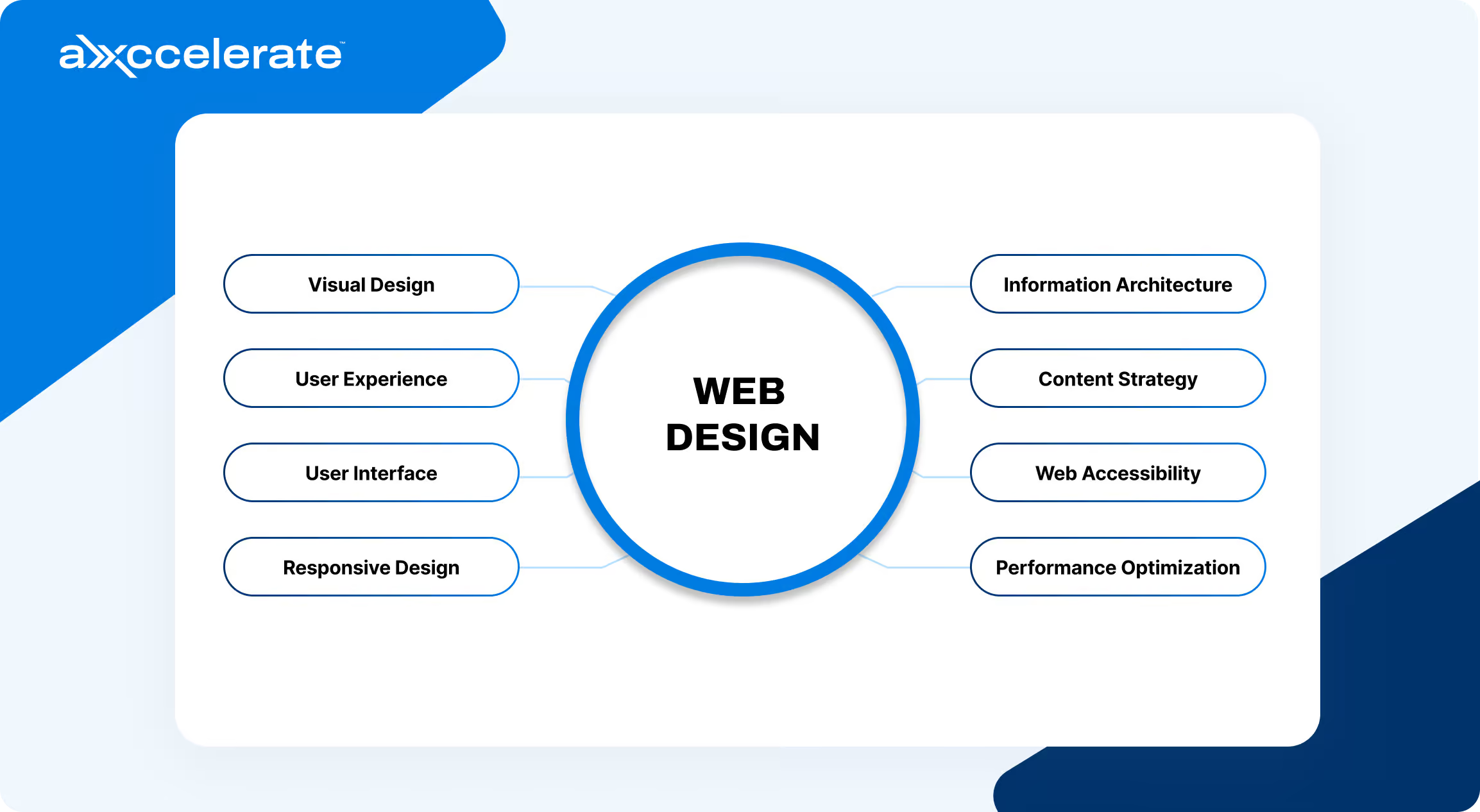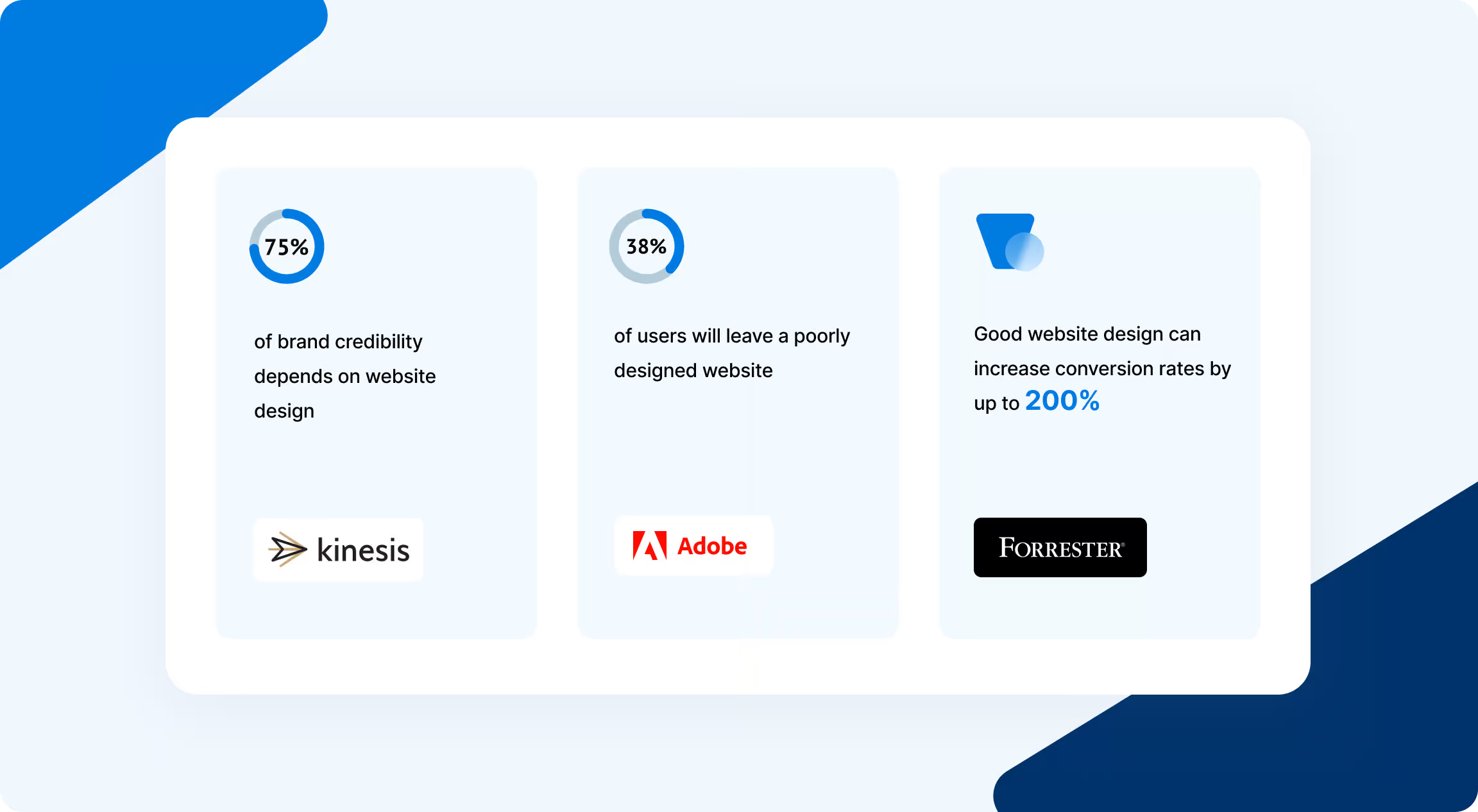Explore Web Design: A Learning Hub
Your resource for understanding the key concepts and strategies in modern web design.











Web Design Fundamentals
Learn the basics of web design principles and concepts
Web Design Glossary
Understand key web design terminology and jargon
Web Design Trends
Get the latest web design statistics and industry trends
Web Design Tools
Explore essential technology and tools for web designers
Getting Started with Web Design
Whether you’re just starting out or looking to refine your skills, this resource covers all the essential aspects of web design. Use the quick links below to jump to specific topics that interest you, or scroll down for an introduction to the world of web design.
What is Web Design?
The Importance of Effective Web Design
Key Principles of Web Design
Creating a User-Centered Design
Web Design and Development Process
Working with a Web Design Agency
Essential Web Design Services for Business Growth
Our core web design services are designed to elevate your online presence and drive measurable results. From creating stunning visuals to optimizing user experience, these essential strategies work in tandem to fuel your business growth.

Web Design
A well-designed website is crucial for making a strong first impression. Learn how professional web design can help:
- Create a visually appealing and brand-aligned website
- Improve user experience and navigation
- Ensure responsive design for all devices

SEO-Friendly Design
An SEO-optimized website helps you rank higher in search results. Discover how SEO-friendly design can benefit your business:
- Improve your website's visibility in search engines
- Enhance site structure and content organization
- Increase organic traffic to your website

E-commerce Design
E-commerce design is crucial for online businesses. Explore how e-commerce design can elevate your online store:
- Create user-friendly product catalogs and shopping carts
- Implement secure and efficient checkout processes
- Design mobile-responsive e-commerce experiences
Beginner's Guide to Web Design
Web design is the practice of creating visually appealing, functional, and user-friendly websites. This guide will introduce you to the fundamentals of web design and its importance in today’s digital landscape.

1. What is Web Design?
Web design encompasses all aspects of creating and maintaining websites, focusing on both aesthetics and functionality.
Key components include:
- Visual Design (layout, color schemes, typography)
- User Experience (UX) Design
- User Interface (UI) Design
- Responsive Design
- Information Architecture
- Content Strategy
- Web Accessibility
- Performance Optimization
These elements work together to create engaging, effective websites that attract visitors, provide a positive user experience, and achieve business objectives.

2. The Importance of Effective Web Design
Effective web design has become crucial for businesses of all sizes. According to recent data, 38% of people will stop engaging with a website if the content or layout is unattractive (Adobe), and 88% of online consumers are less likely to return to a site after a bad experience (Amazon Web Services).
Key benefits of effective web design include:
- Improved user experience and engagement
- Increased conversion rates and sales
- Enhanced brand perception and trust
- Better search engine rankings
- Faster loading times and reduced bounce rates
- Competitive advantage in the digital marketplace
Effective web design is not just about aesthetics; it’s a powerful tool that can significantly impact a business’s online success and bottom line. By investing in quality web design, companies can create a strong online presence that attracts, engages, and converts visitors into loyal customers.
3. Key Principles of Web Design
Let’s explore the most important principles of effective web design:

This principle involves arranging and organizing website elements so that visitors naturally gravitate toward the most important pieces of information.

Ensures that your website looks and functions well on all devices, from desktop computers to smartphones and tablets.

Keep your design clean and uncluttered. Use white space effectively and ensure that your content is easy to read and navigate.

Maintain a consistent look and feel throughout your website, including colors, fonts, and overall style, to reinforce your brand identity.

Design your website so that it's usable by as many people as possible, including those with disabilities or those using assistive technologies.

Optimize your website's performance to ensure it loads quickly, which improves user experience and helps with search engine rankings.

Create a clear and logical navigation structure that helps users easily find the information they're looking for.
4. Creating a User-Centered Design
Follow these steps to create an effective user-centered web design:
5. Web Design and Development Process
1. Discovery
- Define project goals
- Identify target audience
- Gather requirements
2. Planning
- Create sitemap
- Develop content strategy
- Choose technology stack
3. Design
- Create wireframes
- Develop visual designs
- Get client approval
4. Development
- Build front-end
- Implement back-end functionality
- Integrate content management system
5. Testing
- Conduct functionality tests
- Perform cross-browser compatibility checks
- Ensure responsive design works
6. Launch
- Migrate to live server
- Conduct final checks
- Go live
7. Maintenance
- Monitor performance
- Update content
- Implement improvements based on user feedback
6. Working with a Web Design Agency
What services do web design agencies offer?
Web design agencies typically provide a range of services including website design, development, user experience (UX) design, responsive design, e-commerce solutions, and ongoing maintenance and support. They create custom websites tailored to each client’s specific needs and brand identity.
Why consider partnering with a web design agency?
Collaborating with a web design agency brings professional expertise, creative talent, and technical skills to your project. Agencies stay current with design trends and web technologies, allowing you to focus on your core business while they create an effective online presence.
When choosing an agency, consider:
- Their portfolio and experience in your industry
- Their design process and approach to user-centered design
- Technical capabilities and content management system expertise
- Communication style and project management approach
- Pricing structure and value for money
- Post-launch support and maintenance offerings
- Their understanding of web standards and accessibility
Remember, the best agency for you will depend on your specific needs, budget, and goals. Clear communication and a good cultural fit are key to a successful partnership.
Web design is a critical component of your online presence, blending aesthetics with functionality to create engaging user experiences. By understanding these fundamentals and keeping up with trends, you can develop a website that not only looks great but also drives business growth. Remember, effective web design is an investment in your brand’s digital future.
Ready to transform your online presence? Contact Axccelerate today for a custom web design solution!
Explore our services

SEO & Lead Generation

Revenue Marketing & CRO

